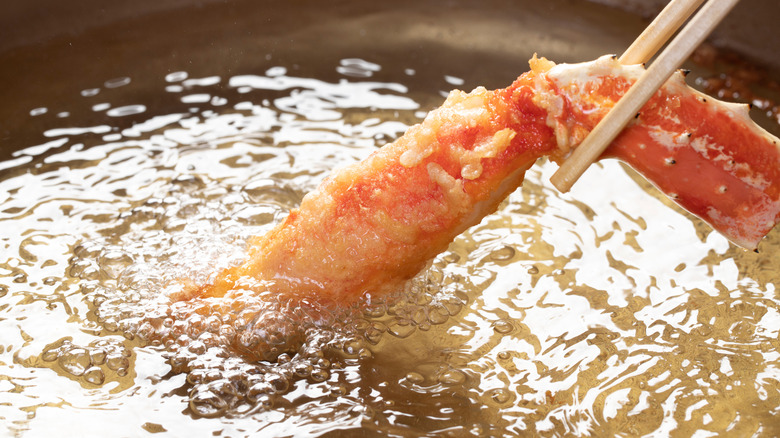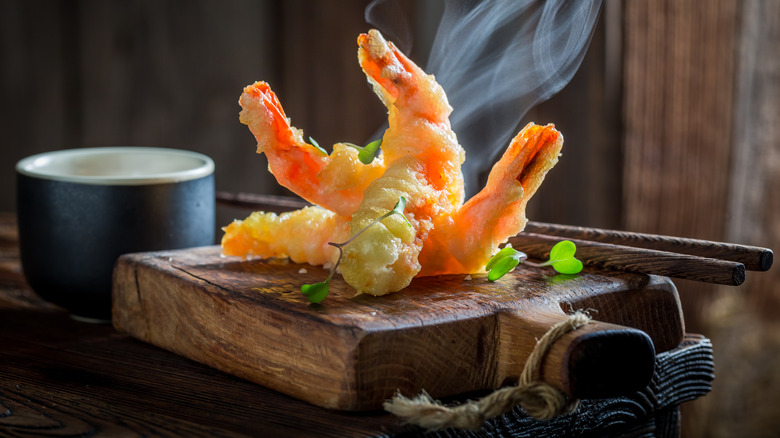The Oil You Should Be Using For The Most Traditional Tempura
Tempura is only as good as its batter. When done right, the fried coating is crisp, but thin and light enough to disintegrate into delicate little crumbs in your mouth. This dainty outer layer shouldn't be too overpowering on the palate, either, for tempura is meant to showcase the natural flavor of the vegetables, meats, and seafood encased inside. Get it wrong, however, and you'll have a soggy, oily mess.
The oil that's used to deep-fry plays a crucial role here. Restaurants in Japan often use Japanese salad oil for frying tempura. This is no high-priced nut or seed oil meant to finish salads, but an extremely refined vegetable oil instead. There are several reasons why this oil is favored. For one, it is neutral in taste, so it doesn't impart a flavor of its own into the tempura. That said, it's common practice to add a tiny amount of sesame oil to neutral oils, as this gives the tempura a subtle nuttiness. More importantly, Japanese salad oil is light in viscosity, which is the key to keeping tempura light and crisp. Thick oils are notorious for clinging onto fried foods and giving them a heavy, greasy aftertaste.
Taihaku sesame seed oil is another popular fat used for tempura. Unlike some versions of sesame oil that have a dark hue and an intense fragrance, taihaku is an untoasted oil with a more neutral scent and flavor. It's also quite expensive, making it more of a "premium" option used at high-end eateries.
Oil alternatives for wonderfully light tempura
If you do manage to snag a bottle of Japanese salad or taihaku sesame seed oil, that's fantastic! You'll be set to make the most traditional tempura at home. However, these oils can be hard to find outside of Japan. In that case, any neutral or refined oil with a high smoke point, like canola, soybean, cottonseed, rice bran, or vegetable oil, can work in a pinch. Add in a splash of sesame oil to give it a more traditional flavor, but be sparing, or it might darken the crust and overpower its clean taste.
Steer clear of thick oils with high viscosity, or which have a distinct flavor, like coconut or olive oil. Never use dairy-based fats such as clarified butter, or animal-based ones such as lard or shortening, either. These are too rich and heavy for the delicate tempura. It's also best to utilize oil that is clean, fresh, and hasn't already been used before. Although cooking oil can be reused, it's not ideal for this application, as it can change the ingredients' flavors.
Make sure that the oil is heated to the right temperature based on what you're frying, as well — winging this is a mistake everyone makes when cooking with oil. Vegetables can be deep-fried at 320 to 330 degrees Fahrenheit, but seafood requires the oil to be as hot as 360 degrees. The wrong temperature can make your tempura more soggy than crisp, and there's nothing more disappointing than that.


